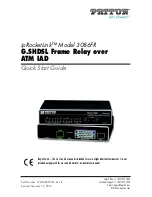
8-19
Catalyst 2900 Series XL and Catalyst 3500 Series XL Software Configuration Guide
78-6511-05
Chapter 8 Configuring VLANs
Using VTP
Upgrading from Previous Software Releases
When you upgrade from a software version that supports VLANs but does not
support VTP, such as Cisco IOS Release 11.2(8)SA3, to a version that does
support VTP, ports that belong to a VLAN retain their VLAN membership, and
VTP enters transparent mode. The domain name becomes UPGRADE, and VTP
does not propagate the VLAN configuration to other switches.
If you want the switch to propagate VLAN configuration information to other
switches and to learn the VLANs enabled on the network, you must configure the
switch with the correct domain name, the domain password, and change the VTP
mode to VTP server.
VTP Version
Follow these guidelines when deciding which VTP version to implement:
•
All switches in a VTP domain must run the same VTP version.
•
A VTP version 2-capable switch can operate in the same VTP domain as a
switch running VTP version 1 if version 2 is disabled on the version 2-capable
switch. Version 2 is disabled by default.
•
Do not enable VTP version 2 on a switch unless all of the switches in the
same VTP domain are version-2-capable. When you enable version 2 on a
switch, all of the version-2-capable switches in the domain enable version 2.
If there is a version 1-only switch, it will not exchange VTP information with
switches with version 2 enabled.
•
If there are Token Ring networks in your environment (TrBRF and TrCRF),
you must enable VTP version 2 for Token Ring VLAN switching to function
properly. To run Token Ring and Token Ring-Net, disable VTP version 2.
•
Enabling or disabling VTP pruning on a VTP server enables or disables VTP
pruning for the entire VTP domain.
















































